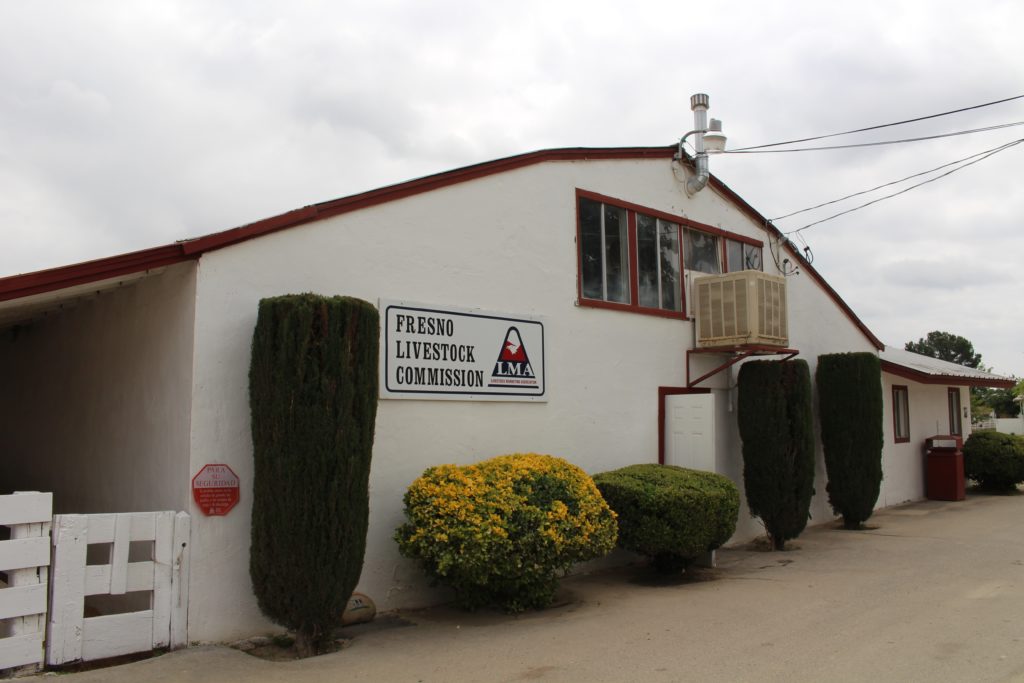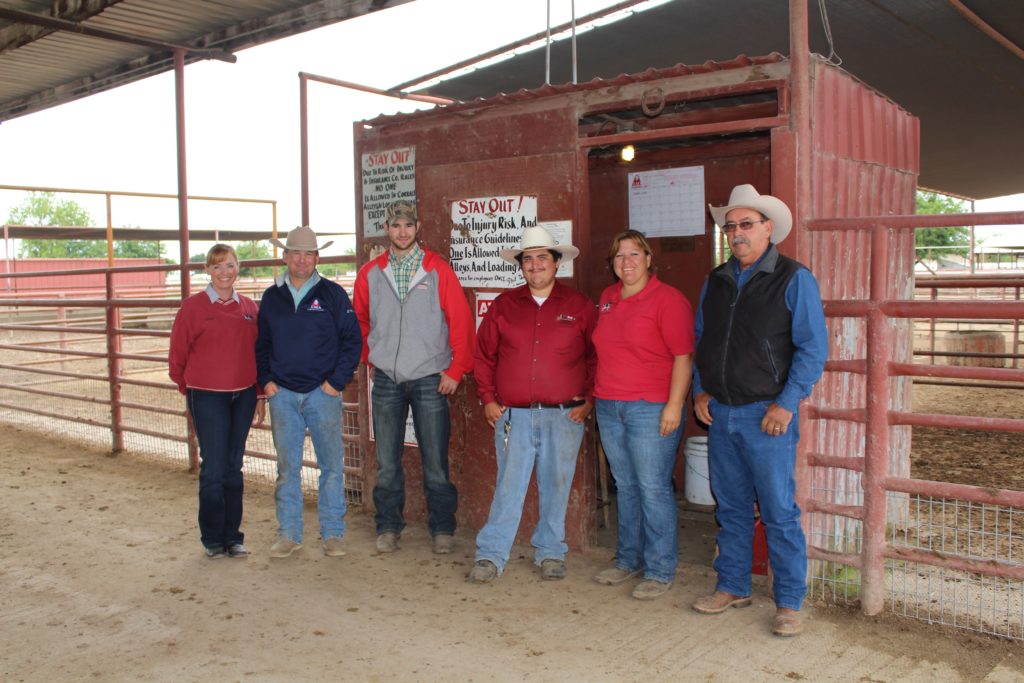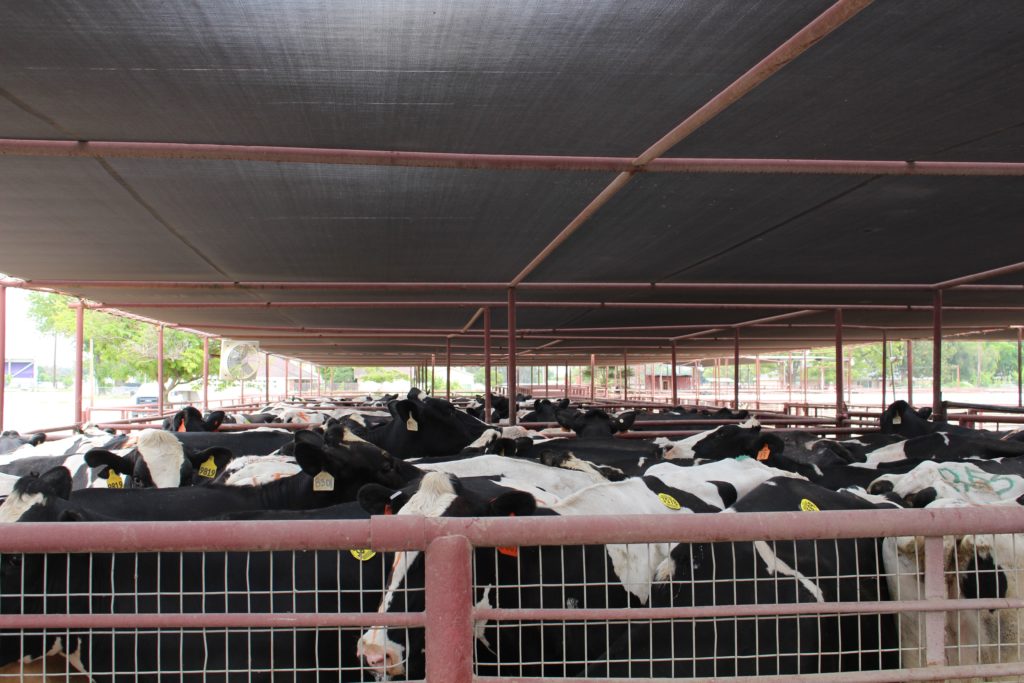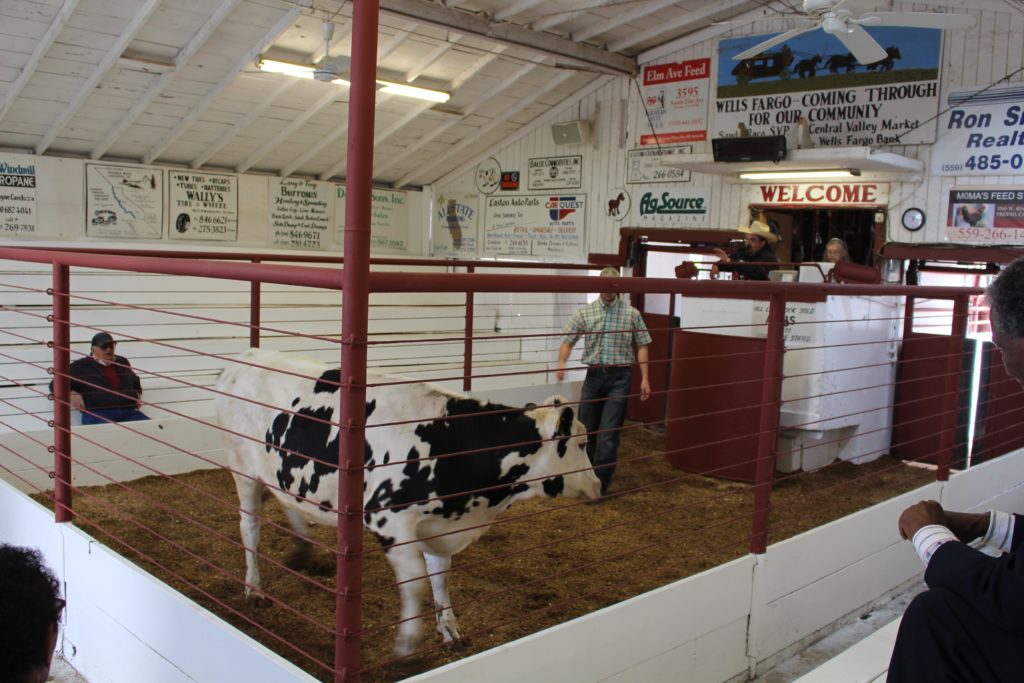Dairy cattle not only produce milk but eventually become beef, along with many other byproducts. In the agricultural industry not a thing goes to waste and dairy cattle are no different. In fact, if you have ever enjoyed one of those famous west coast In-n-Out burgers the chances are very high that the beef is from a dairy cow here in California.
I recently went on a field trip, of sorts, to Fresno Livestock Commission where I learned a little bit more about how these dairy cattle are brought to and through a cattle market. I have been to many cattle sales in my life but most of them were beef. I thought I’d share some of my thoughts, pictures, and a few things I learned along the way.
Although the kind folks of Fresno Livestock Commission have been family friends of ours for generations, I had never visited (shame on me!). What a treat it was to see a day in the life for the entire operation; the owners (family owned), the auctioneer, the buyers, the office staff, the ring-man, all the help in the pens out back (receiving cattle, sorting in and out, and loading out), etc.

The people above are responsible for a very important part of the dairy/beef life cycle and one I think is often taken for granted or just plain overlooked. Markets like these are what move cattle throughout the nation and to the processing plants.
When I arrived, it was apparent that this company takes pride in their business. Everything was freshly painted, pens were clean, and repairs on the fence were being made. Trailer loads of dairy cattle from local dairies were being dropped off, one after another. The cattle came off the trailers slowly and were put into a pen close by.

There was a brand inspector present, employees counting off cattle, paperwork being completed to track the cows and owners information, and animals were inspected for health. Once they were off-loaded, back tags were attached with adhesive to each cow.
Co-owner Cindy Tews says “back tags are an integral part of the ADT (Animal Disease Trace-ability) program. When an animal arrives on site, they are accompanied by a Transportation Slip that clearly identifies the animal offered for sale. It must have the owners name, address, phone number, number of head being consigned, and brands that those have on them for identification. There is a consignment slip filled out by Fresno Livestock personnel that will include color, breed, and class (SL=Slaughter or FE=Feeder). We also include any ear tag numbers. If they have a brand they are drawn in and if there is not a brand that has to be stated. Back tags are placed on the animals and correspond with the animal being described. All back tags are registered and have the livestock markets identify number and then 4 digits that bring up the animal when entered into our computer. Thus as the animal(s) go through the sale ring all pertinent information is available. Upon sale of the animal, the tag follows the animal through either the processing channel or is used to identify origin if it is going on to feeding. Should the animal go to the processing plant, that tag is kept with any other identifying information. Should there ever be a reason to trace that animal back to it’s origin, it is usually done within 48 hours.”

Once the tagging was completed the cattle were sorted into pens. As you can can imagine, it was cool and comfortable under these shades; the cattle were quiet and calm. Due to the efficiency of the crew pictured above and the people who transport these animals, these cattle spent very little time here in these pens before the sale began.

As I observed, I realized that so much of this operation depends on the people much like other areas of Ag. From cattle handling to working with customers to the exchange of money, you could tell immediately that these people take pride in what they do. It radiated through a quiet yet friendly confidence.
“Working with my family is a blessing” says Tews. “My father and I have been partners for 15 years. We share the same work ethic and communication style. Some of our common interests include: Customer service/relations, hearing how and what the families of our customers are doing, attending fundraisers and other community events, running pasture cattle, and developing new and better ways to execute our sale through the use of proper animal handling and employee management tools. We spend many hours together on a day to day basis. Very few disagreements have been encountered and we strive to view each others perspective before reacting to a situation. It is challenging from the standpoint that we are up against the clock in maintaining a speed of commerce that our buyers expect. Whenever there is the pressure of time, ones demeanor can be tested. I always remind myself that I want to be welcome at Thanksgiving.”
As the clock reached 12pm, the buyers shuffled from the cafe and picnic tables located on the grounds to the ring and took their spot. The sale began and with the hum of the auctioneer, fun memories with my mom and grandfather flooded my mind.

Each animal spent roughly 20 seconds in the ring before they were let out to the other side. As one cow left another would enter. Cattle were moved about the ring so buyers had full view of what they were bidding on.
And just like that the sale was over. The office was buzzing with people, questions, and the transfer of money. Cattle were loaded onto the respective trucks and all the pens were again empty. Time to clean up and get ready for the next one!
I am so grateful for this opportunity to have learned and broadened my horizons. The Tews Family is a direct representation of the breed (pun intended) of people that represent this industry I work in and advocate for: honest, sincere, hard working. Cindy, thank you for allowing me an inside look at your operation and for all your wonderful contributions to the cattle industry. You are one of a kind!
